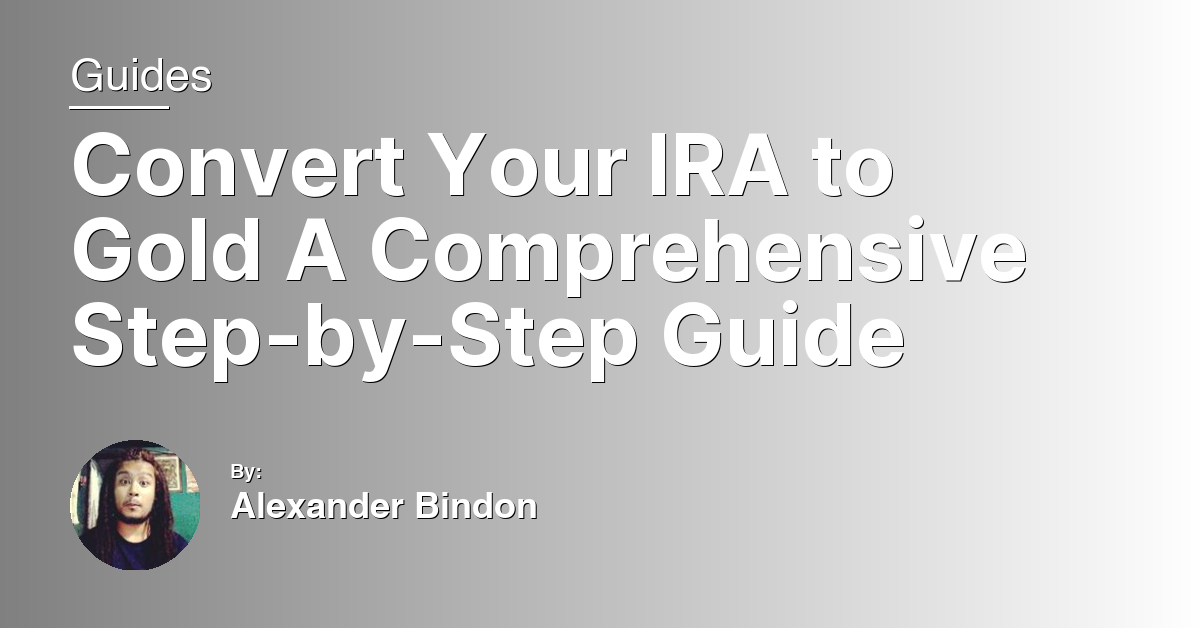In an era where financial security is paramount, diversifying your investment portfolio can be a golden opportunity to safeguard your future. This guide explores the intricacies of leveraging a self-directed IRA to buy and invest in gold, offering a pathway to not just preserve but potentially grow your wealth amidst economic uncertainties. Join us as we unravel the steps, benefits, and considerations of incorporating this precious metal into your retirement planning strategy.
Opening a Self-Directed Gold IRA Account
To open a Self-Directed Gold IRA account, start by selecting a reputable custodian bank or firm that specializes in precious metals. Ensure they are approved by the IRS for handling Gold IRA investments. This custodian will guide you through the rollover process from an existing IRA or 401(k) into a Gold IRA, or aid in setting up a new account.
Next, work with your financial adviser or do thorough research to decide which gold investment suits your portfolio. Options include bullion coins, bars, or gold-related securities like exchange-traded funds (ETFs), stocks of mining companies, or gold mutual funds for diversification.
Fund your account by transferring cash or assets from existing retirement accounts. Be mindful of the IRS rules and limits on contributions and rollovers to avoid penalties. Choose your gold investments based on your financial goals, risk tolerance, and the advice of your custodian or financial adviser.
Understanding the Rules for Holding Physical Gold
When investing in physical gold within a self-directed IRA, understanding the IRS regulations is crucial to ensure compliance and maximize your investment benefits. Firstly, the IRS mandates that the gold must be held by a qualified trustee or custodian bank. Direct possession by the IRA owner is not permitted, as it could lead to penalties or disqualification of the IRA.
The types of gold you can include are specific: investment-grade bullion, certain coins issued by the U.S. Treasury, and other approved precious metal products. These assets must meet fineness standards set by the IRS. Additionally, all purchases of gold must be made through the IRA, using funds within the account, and any sales proceeds must return to the IRA to maintain its tax-advantaged status.
Understanding these rules aids investors in diversifying their portfolio with gold while navigating the potential risks and ensuring the security of their investment against inflation and economic downturns. It’s also vital for compliance with tax laws and avoiding unnecessary penalties.
Evaluating the Pros and Cons of Gold Ownership in an IRA
Evaluating the pros and cons of gold ownership in an IRA is crucial for making an informed investment decision. On the upside, gold is a powerful diversification tool. Its value often moves inversely to stocks and bonds, providing a hedge against inflation and currency devaluation. This can be particularly valuable during periods of economic instability, as seen during the 2007–2008 financial crisis.
However, investing in gold through an IRA also presents certain challenges. The Internal Revenue Service (IRS) has strict rules on the types of gold assets (coins, bullion, ETFs) that can be included, which may limit your options. Moreover, physical gold requires storage and insurance, adding to the cost. Unlike stocks or bonds, gold does not produce income through dividends or interest, which could impact long-term growth potential.
Investors should also consider fees associated with gold IRAs, which can be higher than those for traditional investment accounts. While gold can be a valuable part of a diversified portfolio, weighing these factors against your financial goals and risk tolerance is essential.
F.A.Q.
What is the downside of a gold IRA?
The downside of a gold IRA is the additional complexity and expenses involved, such as purchase commissions, storage fees, and insurance costs, which can reduce potential returns. Additionally, gold IRAs limit investments to IRS-approved precious metals.
Can I convert my IRA to gold?
You can convert your IRA to gold by rolling it over into a gold IRA, but make sure to follow IRS rules to avoid penalties. This usually involves a direct transfer of funds between custodians.
How much is a gold IRA?
A gold IRA can cost anywhere from $200 to thousands of dollars per year for maintenance, depending on the account’s total value and the custodian chosen.
Can you take possession of gold in an IRA?
Taking possession of gold in an IRA requires a true self-directed IRA offered by specific custodians, as IRS regulations mandate that the gold must be held by the custodian. You cannot use IRA funds to purchase gold and store it yourself.

